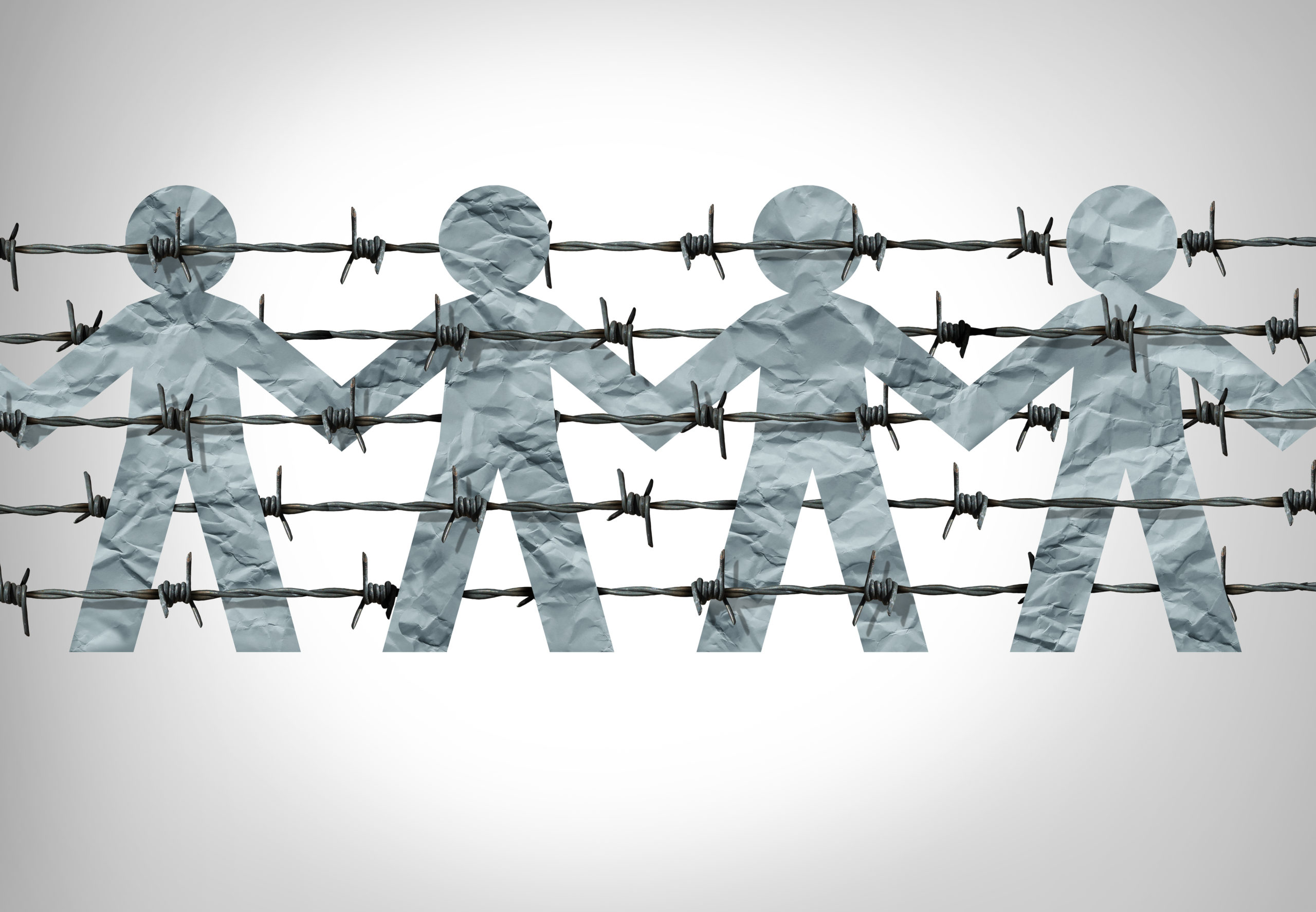
The article titled “FinCEN’s AML and Terrorist Financing Priorities: An Introduction,”1 featured in the ACAMS Today 12th Law Enforcement Edition, shared general thoughts, basic definitions, and practical examples on each of the national anti-money laundering (AML) priorities. This article, the third of the series, will discuss human trafficking (HT)and human smuggling in greater detail.
As stated in the introductory article, there are significant differences between HT and human smuggling. These two crimes are vastly different, with different techniques and typologies. While smuggled individuals could become victims of HT, it is important to understand that there are significant differences between these two crimes and the criminal networks perpetrating them. Human smuggling is the illegal transportation of people from one country to another. Meanwhile, HT, also known as modern-day slavery, refers to the use of force, fraud or coercion to procure labor or commercial sex acts.
HT
Every year since 2010, the month of January has been dedicated to raising awareness about the devastating effects of HT and to educating people about ways to identify and prevent this crime. HT, as mentioned before, includes both forced labor and sex trafficking. This crime undermines human dignity and freedom and generates billions of dollars. According to a White House fact sheet issued in December 2021, “The National Action Plan to Combat Human Trafficking,”2 approximately $150 billion in illicit proceeds are generated each year by these criminals globally; monies that will subsequently be laundered through our legitimate financial systems.
HT is such an international problem that many countries around the world have adopted prevention, protection and prosecution strategies through the passage of anti-trafficking laws. However, there is a lot more we can do, and it starts by raising the level of awareness and understanding of this crime. Here are a few facts that you must be aware of:
- HT is not exclusive to foreign or undocumented nationals.
- HT is not always a violent crime.
- HT is a global problem not exclusive to developing economies.
- HT does not involve the transportation of people from one country to another; that is human smuggling.
- HT and sex trafficking are not exclusive to female victims.
- All trafficking victims, regardless of immigration status, are eligible for services and immigration assistance.
- We must become aware of available resources to help and support victims. If you are in the U.S., you can call the 24/7 National Human Trafficking Hotline at 1-888-373-7888 or by reporting an emergency to law enforcement (LE) by calling 911.
These elements are important as we monitor and combat HT and traffickers. As mentioned before, this crime is highly profitable and a significant portion of the proceeds are subsequently moved, laundered, or stored through/within the legitimate financial system. Some of these transactions include payments for transportation of victims to include other services, such as hotels and meals, but often include cross-border payments, corruption and bribery payoffs, thus expanding their ill consequences to communities and our society. Moreover, some of these transactions, while at times below reporting thresholds, are handled through payment applications and at times by levering cryptocurrency and its perceived anonymity. Therefore, it is evident that AML efforts and financial investigations, including blockchain analytics, are powerful tools to identify, disrupt and dismantle HT organizations by tracing, freezing, seizing and forfeiting the proceeds and assets acquired and linked to this hideous crime. It is essential that financial institutions take a proactive approach to counter HT by taking their actions beyond transaction monitoring/analysis and further training the first line of defense to recognize and immediately report behavioral HT indicators. To that end, enabling strategic partnerships with anti-HT stakeholders, including anti-HT organizations and LE entities, is paramount to properly detect, address and prosecute traffickers while connecting victims with the proper organizations for much-needed support and assistance.
There are several HT red flags divided into financial and behavioral (something the customer-facing employees will see). Some of those are:
Financial:
- Transactions inconsistent with customer line of business
- Transaction activity at abnormal hours and/or in several jurisdictions
- Excessive use of prepaid cards or cash apps
- Unusual transactions involving conversion of cryptocurrency to fiat or vice-versa
Behavioral:
- Third-party maintains possession of identity documents
- Customer shows distress and or signs of physical abuse
- Third-party insists on always being present or is always consulted by the customer
- During a site visit, the alleged business location seems to be used as housing for alleged employees
- Business activity and clientele not aligned with the line of business
Note: If during a site visit, you come across HT indicators, please do not engage or question your customer about your findings. Human traffickers are criminals. Please remain calm, conclude your visit immediately and leave the premises. Follow up immediately with LE as appropriate.
Human Smuggling
Human smuggling is the illegal movement or transportation of a foreign national from one country to another. By legal statute, in many countries, this crime also involves harboring such individuals. For example, in the U.S., human smuggling laws can be found under Title 18 of the U.S. Code, Section 1324 (18USC1324). This section is quite broad as it covers not only illegal entry but the domestic transportation, harboring, encouragement and unlawful employment of these individuals, among other topics. It is important to understand that any financial gains generated as a result of violating this broad statute, 18USC1324, is considered specified unlawful activity and, therefore, a money laundering predicate offense reportable to the appropriate authorities via the established reporting requirements (i.e., suspicious activity/transaction reports).
To further illustrate how human smuggling networks operate, we will briefly discuss Operation Mesoamerica, a long-term multinational investigation that began with a tip to Homeland Security Investigations in Mexico and ended with a multinational and coordinated effort resulting in 27 arrests in several countries. This network of human smugglers worked in a coordinated fashion throughout Central and South America and was responsible for the smuggling of hundreds of foreign nationals through several countries into the U.S. It was estimated that the organization earned millions of dollars in proceeds by charging approximately $20,000 per smuggled individual. These funds were used to pay for logistics, including meals, lodging and transportation, but also to pay bribes to corrupt officials along the pathway, which included Brazil, Colombia, Panamá, Costa Rica, Honduras, El Salvador, Guatemala, Mexico and the U.S. as the ultimate destination. Once in the U.S., these foreign nationals went to work to pay off their smuggling debt and to pay for their subsistence. Please note that this investigation did not uncover any links to HT allegations.
However, human smuggling laws in the U.S. go beyond the actual transportation to include the illegal employment of foreign nationals unlawfully present in the U.S. One such notable case involves a company that knowingly hired over 1,000 illegal employees across its business. This multijurisdictional investigation resulted in an agreement in which the company paid over $20 million in forfeiture, compensations and civil penalties.
Some of the most common red flags for human smuggling are:
- Business owner does not exhibit normal payroll expenditures when compared to business volumes
- Wire transfers to various countries known for human smuggling activity, also known as pathways
- Account receiving monthly round dollar payments from various geographical locations
- Wire transfer activity or cash deposits followed by cross-border payments or transfers
Conclusion
Human smuggling and HT are global problems that require a comprehensive approach and a multidisciplinary effort. While these crimes both involve humans, they are indeed different. Education and understanding are paramount to identifying and countering these crimes. For example, training specifically tailored to aid in the fight against HT/modern-day slavery is more important than ever. As properly stated by the United Nations Office on Drugs and Crime, HT is a crime against humanity, and it is a global problem affecting every country in the world. Every year countless victims, whether women, men or children, fall into the hands of these vicious criminals. As an AML community of interest, we have a powerful tool to curtail this crime while protecting the integrity of our critical infrastructure. Countering HT starts with raising awareness and raising awareness starts with each and every one of us.3
Raymond Villanueva, CAMS, director, Risk Advisory Services, Kaufman Rossin, FL, USA, rvillanueva@kaufmanrossin.com
-
- Ray Villanueva, “FinCEN’s AML and Terrorist Financing Priorities: An Introduction,” ACAMS Today, August 1, 2022, https://www.acamstoday.org/fincens-aml-and-terrorist-financing-priorities-an-introduction/
- “FACT SHEET: The National Action Plan to Combat Human Trafficking (NAP),” White House, December 3, 2021, https://www.whitehouse.gov/briefing-room/statements-releases/2021/12/03/fact-sheet-the-national-action-plan-to-combat-human-trafficking-nap/
- Additional resources: “Fighting Modern Slavery and Human Trafficking Part 1,” ACAMS, https://www.acams.org/en/training/certificates/fighting-modern-slavery-and-human-trafficking; U.S. Department of State, https://www.state.gov; Polaris, https://polarisproject.org/; Financial Crimes Enforcement Network, https://www.fincen.gov; U.S. Immigration and Customs Enforcement, https://www.ice.gov/cornerstone; U.S. Department of Homeland Security’s Blue Campaign, http://www.dhs.gov/bluecampaign; “DHS Center for Countering Human Trafficking,” U.S. Department of Homeland Security, https://www.dhs.gov/dhs-center-countering-human-trafficking










